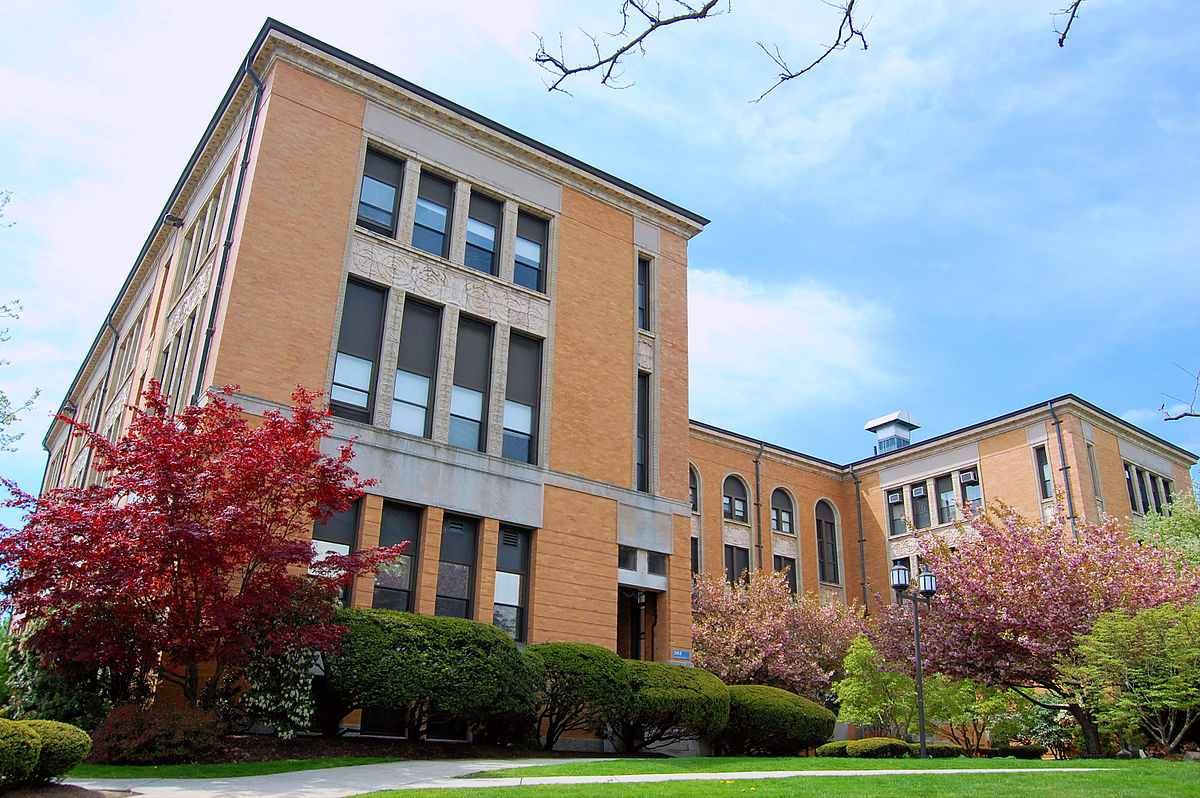
(Fletcher6/Wikimedia Commons)
A slew of racist incidents over the past year has plagued colleges and universities across the country and administrators are still trying to come up with playbooks to combat them. But some students are asking for more.
In September, at Salem State University, administrators found racist graffiti surrounding the baseball field.
Someone had spray-painted "Trump #1, Whites Only USA" on the outfield fence. The "n-word" was painted on a bench beside the field.
Salem State President John Keenan says the incident is still under investigation.
"Our expectation is that it was done actually sometime in broad daylight, in fact, as a neighbor who had noticed it when she was walking her dog realized it wasn't there at nine and it was there at nine thirty," he said.
Later that day, Keenan denounced the hateful act.
"We know there were instances of things of this nature happening around, but to have it happen to our campus in such a dramatic way was, I think, an eye-opener for a lot of people," he said.
It was certainly an eye-opener for psychology professor Michael Mobley.
"My heart went out to the students, and I immediately began to think about what is it that we can do to empower them, to comfort them because I know that this is going to be horrendous," Mobley said.
In response to the vandalism, Salem State canceled classes, held a campus-wide rally and administrators committed to hiring more diverse faculty.
As the values of diversity and free expression struggle to co-exist on college campuses across the country, hate speech and racism have visibly resurfaced.
In November, the FBI reported that hate crimes reached a five-year high at the end of 2016 following Trump's electoral college win.
And the Southern Poverty Law Center, which tracks these incidents, says many harassers on campus invoked Trump's name.
In Massachusetts, hateful incidents were reported at Framingham State and Westfield State, where the "n-word" was written inside an elevator.
At Boston College, students walked out of classes after two Black Lives Matter signs were defaced with the word "don't," changing the message to "Black Lives Don't Matter."
To combat these incidents, campuses have taken a number of different approaches. Tiya Miles, who teaches American culture at the University of Michigan, said the same strategies won't work this time, however.
"We are in a particular kind of cultural and political moment in which it seems that we need to be creative and strategic about how we respond to these rising incidents of racism on campus," she said.
Listen to our extended interview with the University of Michigan's Tiya Miles:
Miles said the typical response to this kind of hate speech — writing letters and making statements — is falling flat in the age of Trump.
"Given the situation perhaps what we can do as students, faculty, staff is to start to meet and to discuss strategic reactions that are fitted specifically to a range of possibilities in advance of their occurrence so that we're not just in a reactive mode," she said.
Miles recommends colleges move beyond the initial outrage and match words with actions, like the rally Salem State held in September.
The university has also created a new Office of Diversity and Inclusion. Rebecca Comage and Michael Mobley co-chair the office.
"Our biggest challenge and priority is going to be rebuilding and restoring our community," Comage said.
"I think what's most important from my perspective is to recognize that still many of our students come from segregated communities particularly when we talk about some of our white students," Mobley added. "So they don't have an opportunity to interact with students of color."
Despite these efforts, some students say it's still not enough.
Sheillanne Wambui, one of the leaders of Students Against White Supremacy at Salem State, said the school needs to do more to create an environment more welcoming to people of color.
"I think it has to go beyond diversity trainings that don't work," she said. "We definitely need more students of color. We definitely need more retention and attainment of faculty of color."
Salem State says a third of faculty hires this year have been people of color. This semester, the university plans to make more space in the curriculum to discuss current events all the time, rather than only after racist vandals hit campus.
WGBH's Esteban Bustillos contributed to this story.
Earlier: At Boston College, Students Speak About Race Amid Protests










